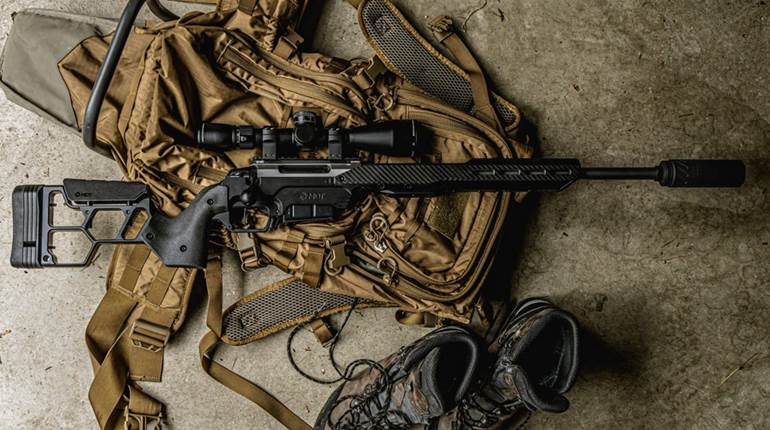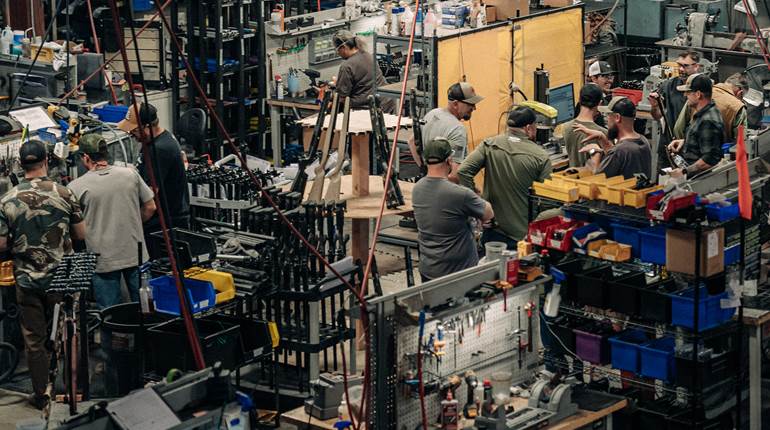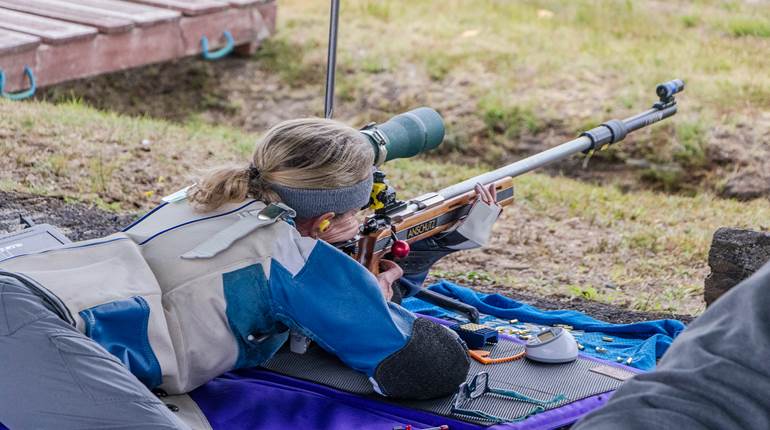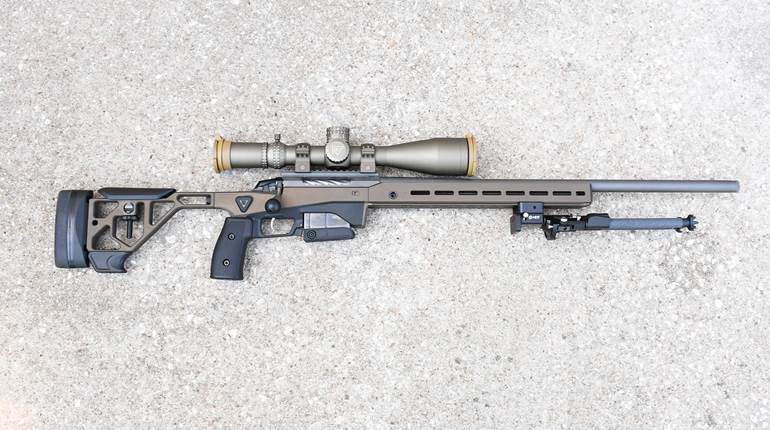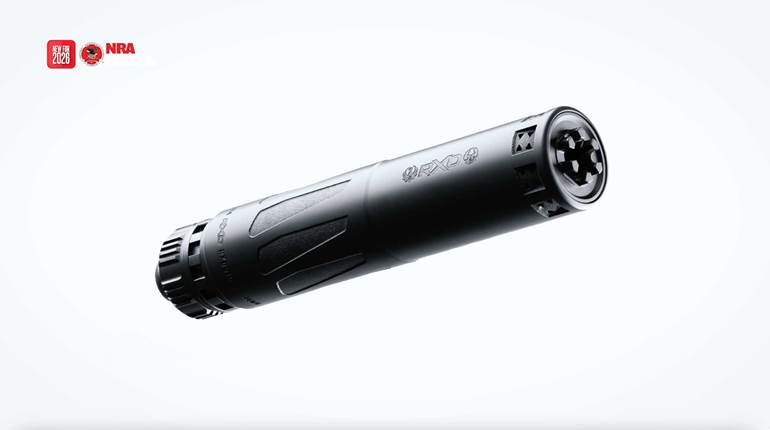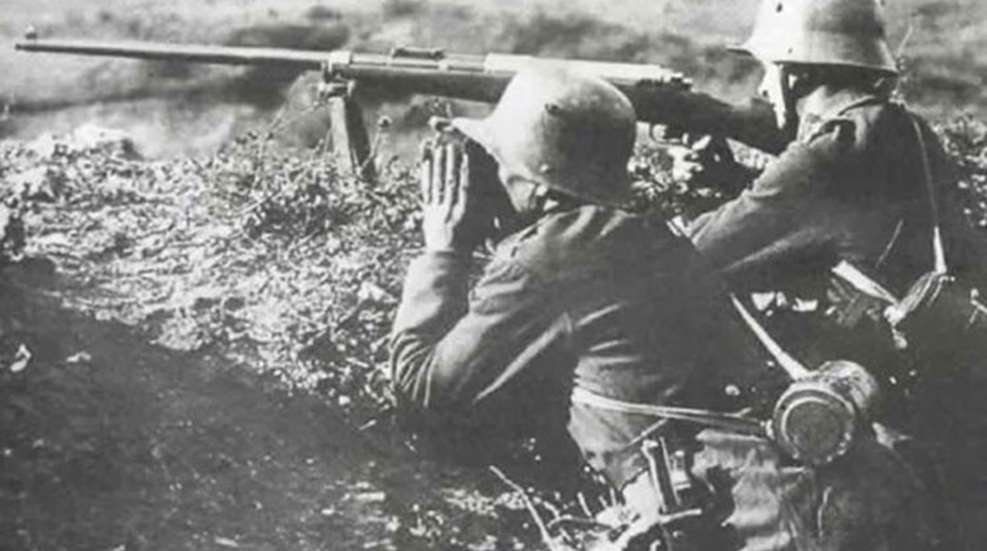
Gerhart tried to flatten his silhouette as he hunched over the giant Mauser rifle. With two solid movements up, then backward, the heavy bolt of the Tankgewehr slid back revealing the cavernous chamber. Once the massive anti-tank round was in position, he closed the bolt and chambered the round … ready for his prey.
A British MK IV Tank slowly rumbled past his position. The muddy earth trembled as the steel tracks from the behemoth carved their way forward through the quagmire. Engine smoke belched from the exhaust as the driver gunned the throttle forcing the tank to climb over obstructions blocking the advance.
As Gerhart looked down the long barrel, he could make out the flaking green paint and rivet patterns on the vehicle’s armor. When he finally sighted the driver’s viewing port, he locked on his target. With a squeeze of the trigger, the Tankgewehr roared with fire and smoke. The force of the recoil dug the bipod legs into the ground and smashed Gerhart’s helmet into the buttstock leaving a gouge in the wood.
The tank shuddered and stopped for several seconds and the machine guns on the behemoth lit up, firing wildly in all directions.
Gerhart frantically re-loaded his 1918 Mauser Tankgewehr and took aim at a specific location on the hull of the tank. The engines suddenly went to full power and smoke poured from the exhaust. The new driver shifted into reverse and began to pivot with one track as he backed.
Gerhart fired again, and the tank guns went silent…then he heard the screaming… Suddenly the hatch flew open revealing flames and choking black smoke. One crewman managed to crawl out, still burning on the ground.
Gerhart had managed to rupture the internal fuel tank as he was trained in gunnery school.
Or that is how it could’ve gone for my hypothetical Gerhart. I’ve used this story to tell how the Tankgewehr was employed, now let’s get into the gun itself.
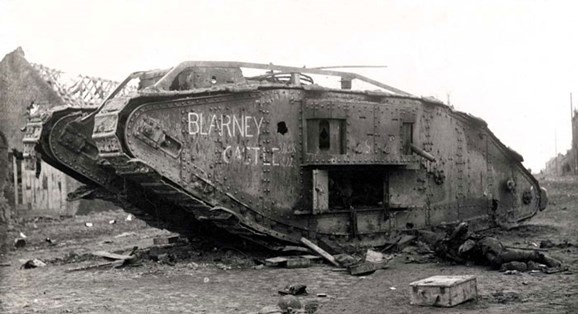
Destroyed British MK IV tank
The Tankgewehr (tank-rifle) is the world’s first anti-tank rifle developed by the Germans in 1918. This arm was specifically designed to combat the onslaught of Allied armor on the Western Front.
In November 1917, the British launched the first full-scale tank offensive at Cambrai. The attack caught the Germans by surprise and the British managed to push approximately 20 kilometers through the German lines. The church bells rang in Britain for the first time in two years. The British were stunned by their own success and failed to properly support the attack. The Germans counterattacked and won back all the lost ground within two weeks. This first organized tank assault by the British made the Germans immediately realize the need for an anti-tank weapon.
Thus, the Germans began development of the TuF (Tank und Flieger-Tank and Aircraft) machine gun—a dual-purpose machine gun that used a huge 13.2 mm TuF round. They realized that they could not design and deploy the TuF machine gun as fast as they needed it, so they created the 1918 Tankgewehr as a stop-gap measure to take on the tanks. Essentially, the Mauser engineers roughly based the T-Gewehr on the Mauser 98 rifle and incorporated some features of older designs. They built this new rifle specifically for the 13.2 mm TuF round.
Two to three T-Gewehrs were issued per regiment. They were operated by two-man gun crews. The primary gunner would carry the rifle and 20 TuF cartridges in a cloth shoulder bag with a tool kit. The secondary gunner carried two cloth shoulder bags, 20 rounds each, and an ammunition box that contained 72 cartridges.
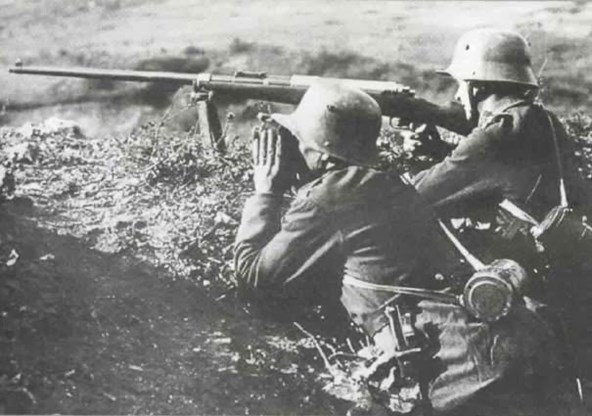
German anti-tank crew on the prowl.
These specially selected soldiers hunted enemy armor and positioned themselves to be within 500 meters of the enemy tanks to be effective. Gunnery school trained these anti-tank teams to target viewing ports and known areas of the tank occupied by drivers and gunners. They had information on fuel and ammunition storage and targeted those areas as well. These soldiers were extremely battle hardened to stare directly down the barrel of enemy tanks, knowing that they were also closely supported by enemy infantry.
Although the rifle proved that it was a beast on the battlefield, it could not keep up with the large number of Allied tanks. The Germans were out-resourced by the Allies and could not stop the waves of tanks approaching Germany at wars end in 1918.
While searching for the next restoration project for the WWI Preservation Collection, I came across T-Gewehr S/N 5043, which was badly burned in a fire. All that was left were the blackened and charred metal components of a monster anti-tank rifle. My task was to restore this beast of a rifle back to museum-quality display status, because saving this historically-significant weapon is important to preserving the combat history of World War I.
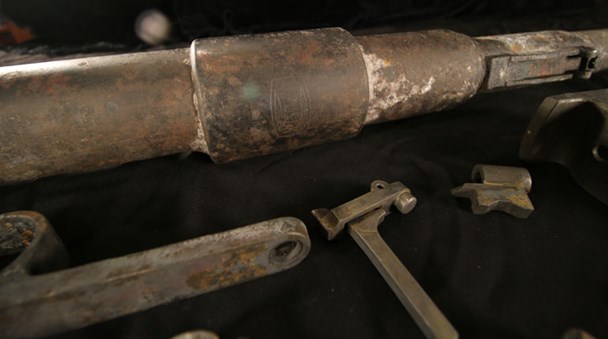
Destroyed and burned Tankgewehr S/N 5043 as recovered.
I obtained the 1918 Tankgewehr rifle from fellow World War I Collector Hayes Otoupalik, who is a special military historical advisor to the National World War One Centennial Commission. Hayes has been essential in finding the initial parts for this project. The condition of the 1918 Mauser was completely destroyed; the parts were black and covered with soot and scale. The smell of smoke was noticeable when I unboxed the artifacts. I evaluated the T-Gewehr parts and made notes of the extensive damage that required restoration, including a destroyed wood stock and pistol grip and a missing front blade sight and bi-pod.
Where the heck do you get parts that don't exist anymore? If you have a gun as rare as the T-Gewehr, chances are there are no extra parts floating about. The Germans only made about 15,000 of the guns in 1918, and only a handful exist today, 100 years later.
Original drawings? Finding original Mauser drawings from World War I would be hard to get—if they even exist.
The Mauser factories were prime targets during World War II, and the Allies pummeled the factories with high explosives time and time again. Fat chance finding any build drawings from 1918. So the only avenue left for a restorer is to replicate existing parts. This is where it pays off to have access to private collectors and museums that trust you and are willing to help you by loaning parts or getting measurements from the originals in their collections. These resources for the restorer can help other collectors and museums all over the world.
Cleaning the Barreled Receiver
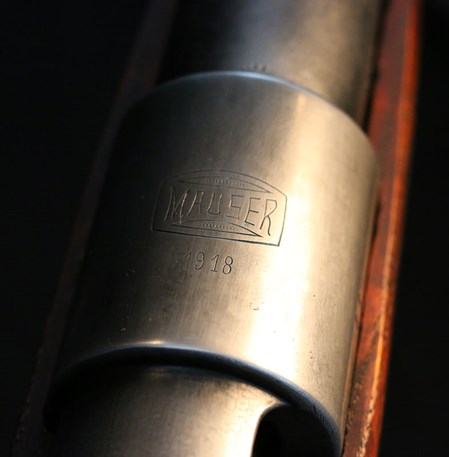
Solution soaking to remove fire scale and carbon deposits.
After a week of soaking and scrubbing, the receiver was completely free of fire scale, but the barrel still had some areas with blackened, baked-on build-up that would not come off. I elected to have the barrel and bolt professionally glass-bead-blasted by a local company that are experts in using dry-media blasting materials.
It is imperative to preserve the cartouches and markings on the artifacts. These markings and Imperial Cyphers are the historical links that tie the artifacts to their specific time period. The receiver was masked off to protect it, and the barrel and bolt received the blasting treatment with outstanding results. The serial number and marks on the barrel were revealed with crisp clear edges.
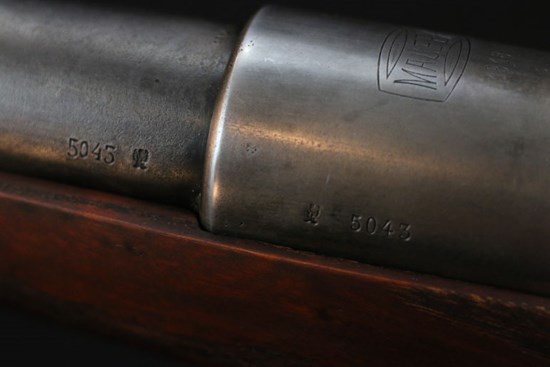
Barrel and receiver serial number 5043.
Front Sight Base Repair
Upon inspection, someone had cut the sight base so that they could spread open the dove tail to salvage the front sight. Luckily, they did not deface the Imperial Cypher on the front of the sight base. To make this repair, the barreled receiver was routed to a local machine shop and repaired by an expert TIG Welder.
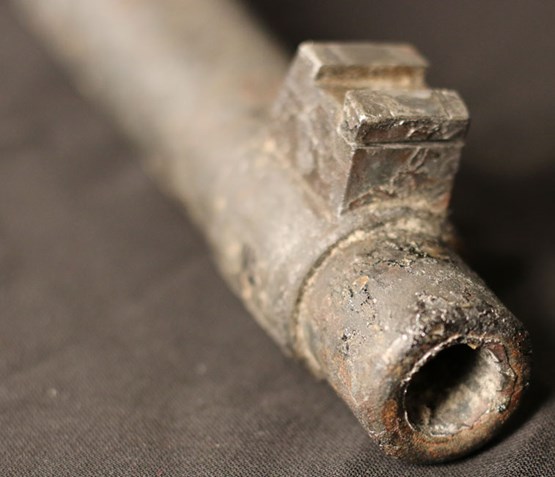
Damaged front sight base.
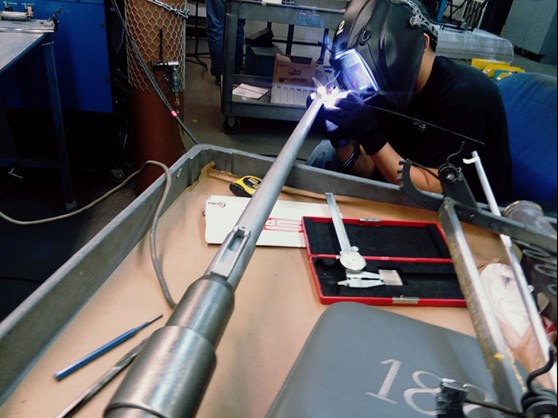
TIG welding the front sight base.
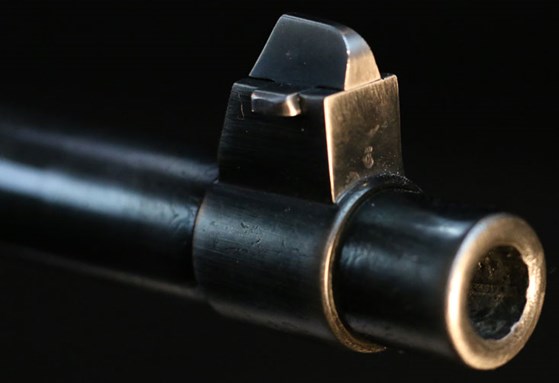
Preserved Imperial German acceptance mark.
Recovered Bipod
Luck would have it that Hayes Otoupalik in Missoula, Mont., checked with the original owner of the T-Gewehr and managed to find the original bipod that was on the gun at the time the fire occurred. And to no surprise, the condition of the bipod was the same as the rest of the T-rifle ... burned.
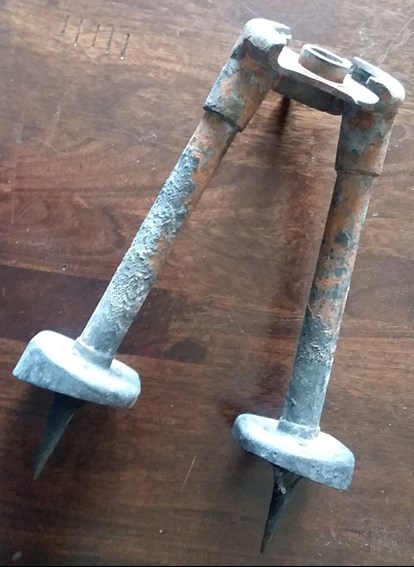
Burned bipod as recovered.
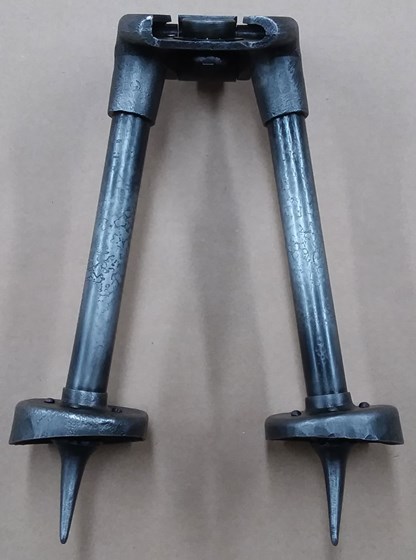
Final finish applied to restored bipod.
The Rear Sight
The rear sight was heavily damaged and encrusted in scale and ash. The range slider was locked solidly in place, and the button would not depress anymore. The Germans figured out that it was useless to mark the sights beyond 500 meters because that was the limit for armor penetration. However, the first 300 T-Gewehr rifles had fully graduated sights up to 2,000 meters.
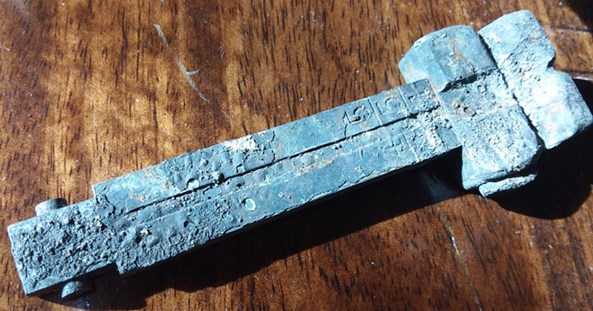
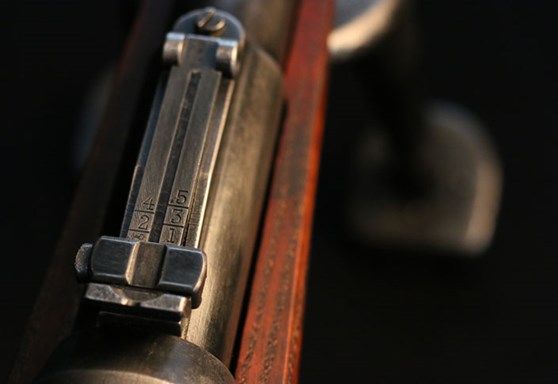
The rear sight before and after restoration.
The Parts
This is what I will call the loose parts package. It contains all of the inner parts like the trigger, sear spring, ejector and the stock-mounting hardware. The internal parts were the easiest to restore, because although they were subject to extreme heat, they were not exposed to direct flame. Nonetheless, all the springs were destroyed by the heat and were replaced.
The Front Blade Sight
Although the original front blade sight was salvaged for another T-Rifle, I was able to have one manufactured using an original as a pattern.
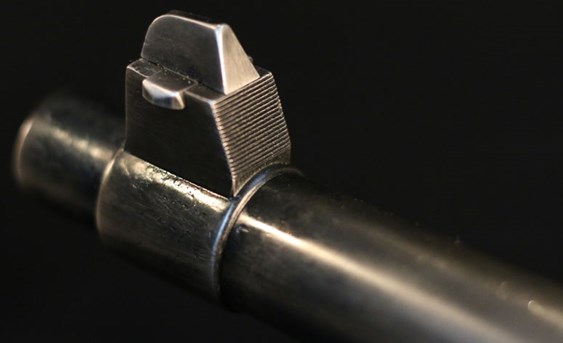
Completed front sight installed.
The Wood Stock and Pistol Grip
Where do you find a replacement Tankgewehr stock and pistol grip? The answer is ... you don't. And you won't. The correct question is: How do I replicate a Tankgewehr stock and pistol grip? I started working on the wood component issue realizing three factors:
1. I needed to find a hardwood blank big enough for the project.
2. I needed someone to supply an original stock and pistol grip on loan.
3. I needed to find someone who had the talent and ability to replicate the parts.
Once I performed the research, I discovered that the original stocks were made of ash hardwood. The ash wood blank I found for my project measured 58" long x 7" wide x 4" thick. I now had the wood for the new T-Gewehr stock and the pistol grip.
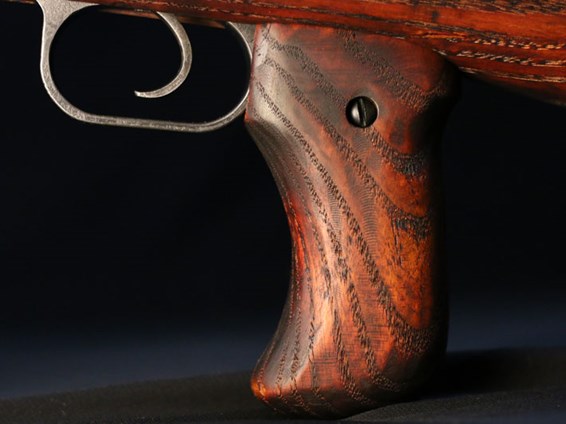
Perfectly re-constructed pistol grip.
Next, Hayes Otoupalik graciously allowed the use of his personal T-Gewehr wood components to be replicated. I now had access to the original components to replicate.
Lastly, Murray’s Gunstocks in Oregon can duplicate gun stocks, and Mr. Murray is a talented craftsman that covers every detail. However, it was a challenge to make this stock just because of the immense size, but he stepped up to the challenge and made a wonderful re-creation of the T-Gewehr stock. As far as I know, this is the first new-production T-Gewehr stock that has been made since 1918.
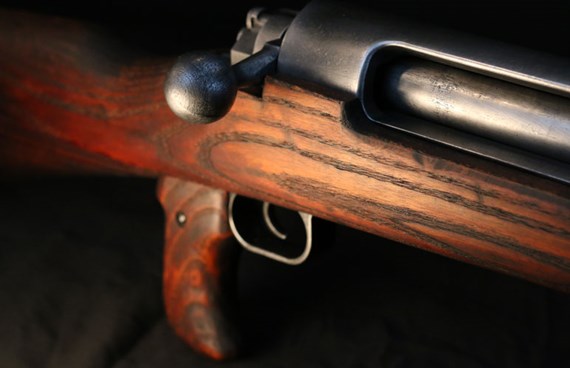
Bolt side of the stock.
Final Finish Barreled Receiver
I looked at lots of original German black-and-white photographs to determine what the in-service finish of the T-Gewehr was back in 1918. It appears to me that the receiver and bolt were very light in color also known as “in the white.” The barrel appears to be blued along with the rest of the components. My intention was to re-create this factory finish, only put some age to it and make it look like it has seen front line service.
Final Stock Finish
I reproduced the stock imperial stamps (cartouches) and performed a special staining technique to age the wood as it should look on a period rifle.
Final Assembly

Completed 1918 Tankgewehr restoration S/N 5043.
I am humbled to have taken on this project. I feel as though I have done something important by bringing this magnificent rifle back from the brink. It is now once more the amazing legendary “Tank Killer” … the 1918 Tankgewehr.
Overall, the goal of this project was to restore this T-Gewehr back to its 1918 World War I combat condition. Since this remarkable arm was recovered from a fire, it is fair to say that this T-Gewehr is unsafe to shoot and was being restored to be used as a museum display artifact from World War I. The temperatures that engulfed this T-Gewehr are unknown, but there are clues that suggest that the temps were very high. First of all, none of the wood survived and was burned away. The amount of scaling and surface distortion on the metal components is also a clue. Finally, I found several droplets of copper on the barrel. This means that the fire was hot enough to melt copper at 1,085 degrees C or 1,981 degrees F. At these temps, the temper of the gun metal has surely changed and is not as it once was when it left the Mauser factory back in 1918.












